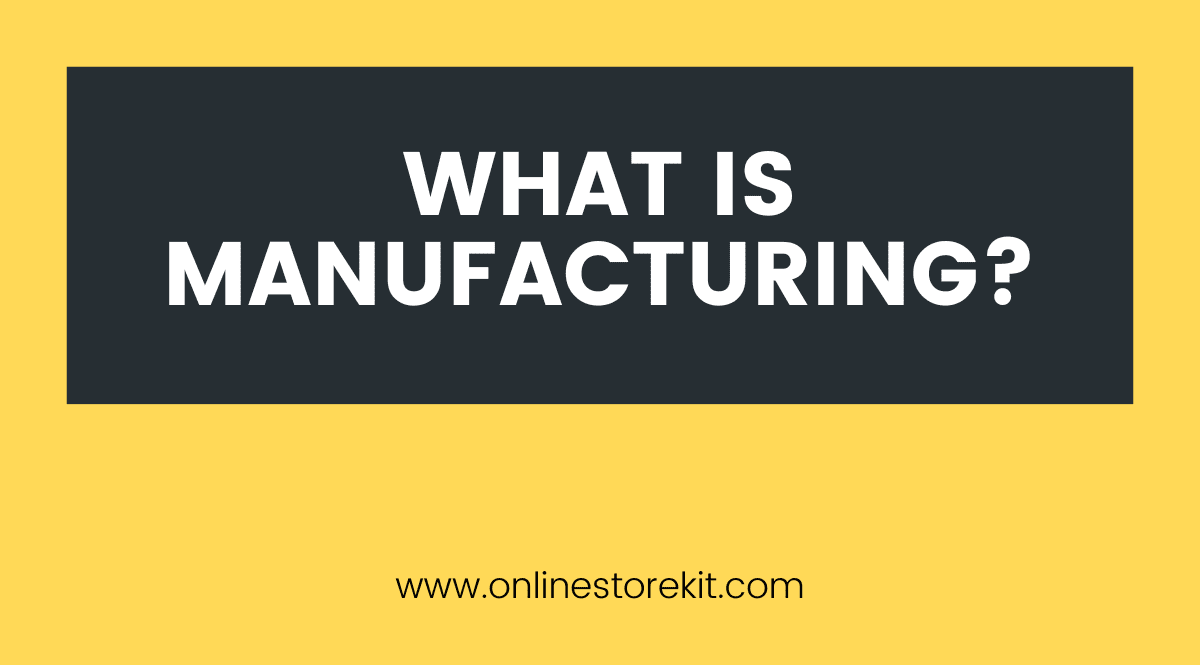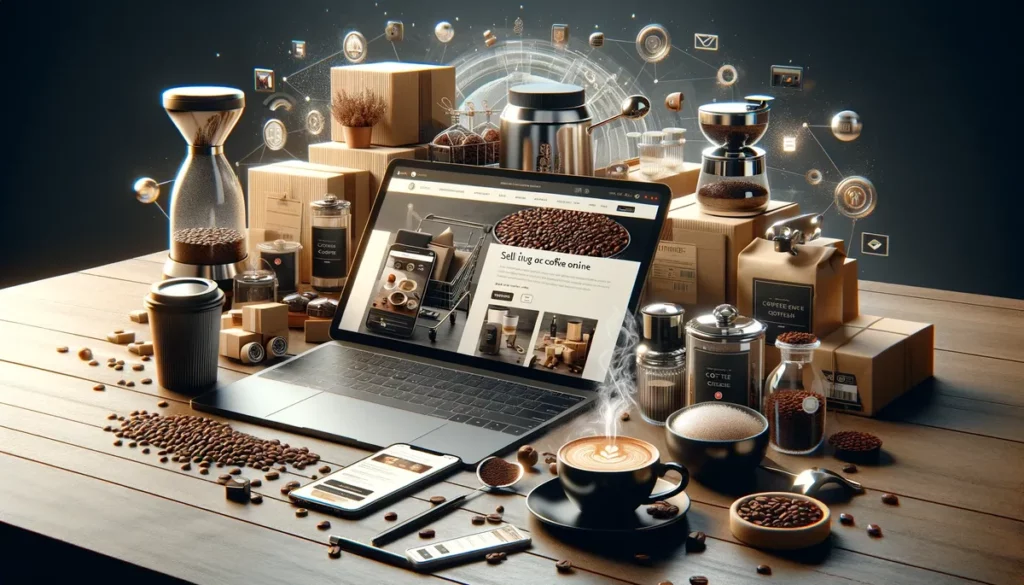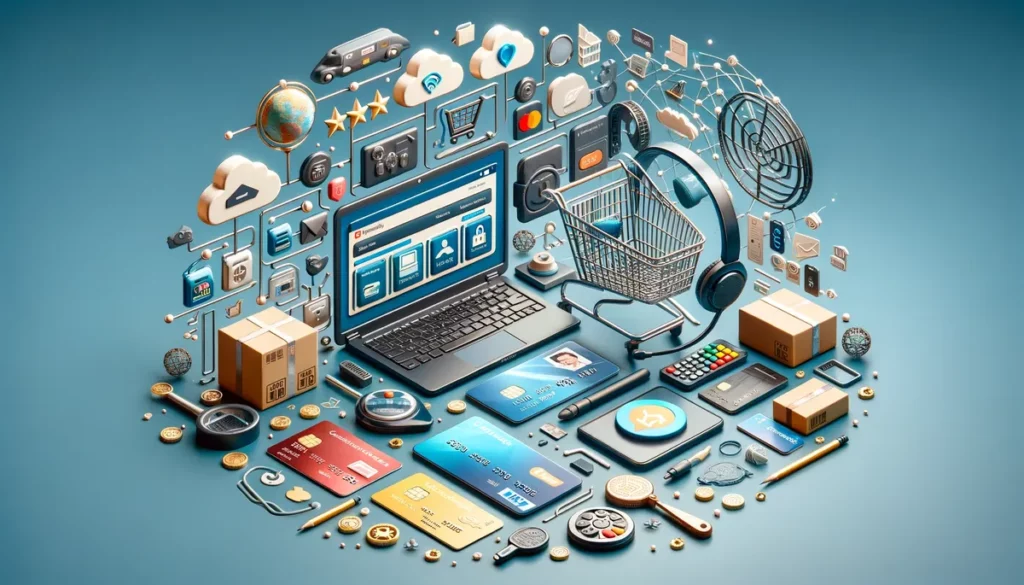Manufacturing has long been a cornerstone of the global economy, yet its meaning is often misunderstood.
This guide provides an in-depth exploration of the world of manufacturing, including its definition, types, advantages and disadvantages, processes and quality control measures.
By juxtaposing traditional methods with new age approaches to production, it will outline key changes in the industry that are revolutionizing the way products are created today.
A Look Into Manufacturing in Business
Show- Manufacturing is the process of transforming raw materials into finished goods, utilizing tools, machinery, and labor.
- There are three types of manufacturing: batch manufacturing, mass production, and continuous flow manufacturing, each with its own advantages and disadvantages.
- Quality control is crucial in manufacturing to ensure the final product meets customer specifications, leading to improved product quality, customer loyalty, and cost savings.
- The future of manufacturing lies in automation and technological advances, such as smart manufacturing, IoT, and Big Data, which require manufacturers to invest in new technologies and stay ahead by adapting to industry trends.
Definition of Manufacturing: What is Manufacturing?
Manufacturing is the process of transforming raw materials into finished goods through the use of tools, machinery, and labor.
It is an essential part of the modern global economy and involves a complex supply chain that spans multiple stages to ensure cost optimization.
Manufacturing processes can be divided into four main categories: fabrication, assembly, machining, and finishing. In fabrication, raw materials are cut or formed into parts for further processing.
Assembly involves joining these components together to create a product according to a specific design.
Machining is used to shape parts by cutting away material until they reach their desired form and dimensions.
Finishing includes various treatments such as painting or plating in order to enhance the appearance and quality of the final product.
These steps are often repeated with different materials and techniques in order to meet customer specifications efficiently while minimizing costs.
By understanding each type of manufacturing process, businesses can maximize production output while maintaining quality standards.
This transition leads us logically into the next section which discusses types of manufacturing in more detail.
Types of Manufacturing
Various processes are used to produce finished products through manufacturing. There are three main types of manufacturing: batch, mass, and continuous flow.
Batch manufacturing is the production of a limited number of items in one run, usually for prototypes or small-scale production runs.
Mass production involves large-scale production of standardized items, such as automobiles or electronics.
Continuous flow manufacturing is where a continuous input of raw materials is processed into the same product with no end until the process is stopped.
Each type has its own advantages and disadvantages in terms of cost efficiency and resource optimization.
Batch manufacturing is highly specialized and requires more time per item than other forms of manufacturing but it can be beneficial when producing customized products with low volume needs.
It also allows for changes to be made during the process so that each item produced can have slight variations from each other if necessary.
Mass production typically has higher setup costs due to the automation required but it offers greater cost efficiencies when producing high volumes of identical goods due to its ability to quickly create large numbers at a low cost per unit.
Advantages of Manufacturing
The advantages of manufacturing can include cost-efficiency, resource optimization, and increased production speed.
Outsourcing benefits are a key advantage in the manufacturing process; companies can take advantage of lower labor costs by outsourcing certain processes to countries where wages are lower.
Supply chain management is also an important factor; manufacturers have access to a global marketplace of resources at their disposal, allowing them to take advantage of better prices for materials and components.
| Pro | Con |
|---|---|
| Cost-savings | Environmental impact |
| Resource optimization | Quality control issues |
| Increased production speed | Risk of disruption from suppliers or buyers |
| Access to global supply chains | Unpredictable changes in demand or resources |
In addition, economies of scale can be achieved through mass production processes — providing cost savings that trickle down to the consumer.
However, there are disadvantages associated with this type of manufacturing as well which will be discussed in the next section.
Disadvantages of Manufacturing
Manufacturing has been a cornerstone of the modern economy for many years.
However, it does have some drawbacks. Automation concerns arise due to the increasing use of automation in production processes.
Additionally, environmental impacts can be significant as manufacturing processes may generate harmful emissions and waste products.
These issues are often difficult to mitigate and require careful consideration when making decisions about manufacturing operations.
Automation Concerns
Automation in manufacturing has raised concerns about job displacement and labor market changes.
The use of machine learning and automation in the industry increases production efficiency, but there is a risk that human labor could be replaced by robots.
Automation risks include job loss due to increased productivity, low wages from employers who replace human labor with machines, and decreased employment opportunities as fewer people are needed for certain jobs.
Additionally, automation can create new problems such as skills shortages and income inequality between those who have access to automated technology and those who don’t.
Environmental Impacts
Increasingly automated manufacturing processes have been linked to potential environmental impacts, such as increased energy consumption and emissions of pollutants.
Green Manufacturing: use of renewable resources and efficient production methods to reduce or eliminate waste.
Sustainable Production: the adoption of practices that decrease environmental impact while maintaining product quality.
Pollutant Emissions: release of hazardous materials into the air, water, or soil from industrial sources.
The effects on the environment are a major concern for manufacturers looking to reduce their carbon footprint and increase sustainability in their operations.
As such, many have adopted green manufacturing principles and sustainable production methods in an effort to combat these issues.
Manufacturing Processes
Manufacturing processes are highly complex, requiring careful consideration to ensure efficiency and quality control.
Automation of manufacturing has been proven to offer a range of benefits, including increased precision and production speed, reduced labor costs, improved safety protocols, and the potential for self-regulation.
Quality control is essential during the manufacturing process in order to guarantee that the final product meets customer specifications.
Automation Benefits
Adopting automation techniques can result in greater efficiency and productivity within the manufacturing process. Automation enables manufacturers to:
- Increase job security for employees by reducing the risk of human error leading to production problems or financial losses.
- Achieve cost savings through increased accuracy, faster production times, and reduced labor costs.
- Improve quality control and consistency of products due to automated processes that are able to detect errors before they happen or as soon as they do occur.
These benefits of automation lead to improved quality control which is essential for successful manufacturing operations.
Quality Control
Implementation of quality control measures is essential for ensuring production reliability and meeting customer expectations. Quality control must focus on the overall process, from design and engineering to manufacturing and delivery.
Quality control should be integrated into every step of the production process to ensure that all processes are standardized and optimized for cost efficiency.
This can involve inspecting materials, components, sub-assemblies, finished products, as well as final testing before shipping.
Quality control also involves assuring that proper documentation is in place for all regulatory compliance purposes.
Furthermore, quality control focuses on continuously improving product design through analyzing customer feedback and market trends to create superior products with fewer defects.
It is important that a company have a comprehensive system in place to manage its quality assurance process due to its critical role in maintaining customer loyalty and satisfaction.
Quality Control in Manufacturing
Ensuring quality standards are maintained is an essential component of manufacturing processes. Quality control in manufacturing involves the following steps:
- Developing detailed specifications which must be met for each product
- Testing and inspecting products to ensure they meet these specifications
- Taking corrective action when needed to improve quality
The implementation of quality control measures can result in cost savings, improved supply chain management, and enhanced product safety.
Additionally, it can help manufacturers identify potential areas for improvement in their production process and make changes as necessary.
Quality control in manufacturing is a crucial part of ensuring that companies remain competitive and can produce safe, reliable products.
By implementing consistent quality control procedures, manufacturers not only improve the quality of their products but also protect their reputation from potentially costly recalls or other issues that could arise from defective products reaching consumers.
With this information in mind, it’s important to consider how advancements in technology may affect the future of manufacturing going forward.
Future of Manufacturing
The future of manufacturing is likely to see increasing use of automation and other technological advances that can help streamline production processes and improve quality control.
Industry trends such as the move towards smart manufacturing, the Internet-of-Things (IoT), and Big Data are all expected to shape how manufacturers operate in the coming years.
Automation will also continue to be an important element in improving efficiency, as well as reducing costs.
Additionally, with increased global competition, supply chain management is becoming increasingly important for manufacturers.
This includes a focus on logistics, procurement, inventory management, product tracking systems, and more.
As technology continues to evolve at a rapid pace, it’s likely that these trends will become even more prevalent over time.
Manufacturers must stay ahead of the curve by investing in new technologies and keeping up with industry developments if they want to remain competitive.
Conclusion: Understanding Manufacturing in Business
Manufacturing is a process of transforming raw materials into finished goods. It involves processes such as design, production, assembly and distribution.
Manufacturers must consider various factors such as cost, quality, efficiency and safety in order to remain competitive in the market.
Quality control plays an important role in manufacturing, ensuring that products meet customer requirements and industry standards.
As technology advances, manufacturers are able to produce faster and more efficient products with greater accuracy than ever before.
While there are many advantages to manufacturing, it also has its disadvantages such as environmental consequences and job displacement due to automation.
The future of manufacturing will depend on new innovations that can reduce costs while still providing quality goods for consumers.
As the saying goes “the only constant is change”; if manufacturers can stay ahead of changing trends they will have a bright future ahead of them.
Frequently Asked Questions
What Are the Different Career Opportunities in the Manufacturing Industry?
Manufacturing industry professionals have varied experiences and career paths. These may include roles such as engineering, production, quality control and research & development. Opportunities for further advancement are available in management or specialist positions.
What Are the Most Important Safety Considerations for a Manufacturing Environment?
Safety in a manufacturing environment is paramount and must include accessibility protocols, automation planning, and other measures to reduce the risk of injury or illness. Proper safety training should be provided to all personnel.
What Are the Environmental Impacts of Manufacturing?
The energy consumption and waste disposal of manufacturing can have a significant environmental impact. From air and water pollution to over-consumption of resources, manufacturing processes can cause extensive damage. Careful management is needed to ensure minimal environmental disruption.
What Is the Cost of Implementing Quality Control in Manufacturing?
The cost of implementing quality control in manufacturing depends on the complexity and scope of the process improvement. Cost effectiveness can be maximized with careful planning to ensure resources are utilized efficiently.
How Can Digital Technology Be Used to Improve Manufacturing Efficiency?
Digital technology can be used to improve manufacturing efficiency through data-driven automation and predictive analytics. Automation allows for faster processing of information, while predictive analytics can provide insight into potential issues and areas for improvement.







